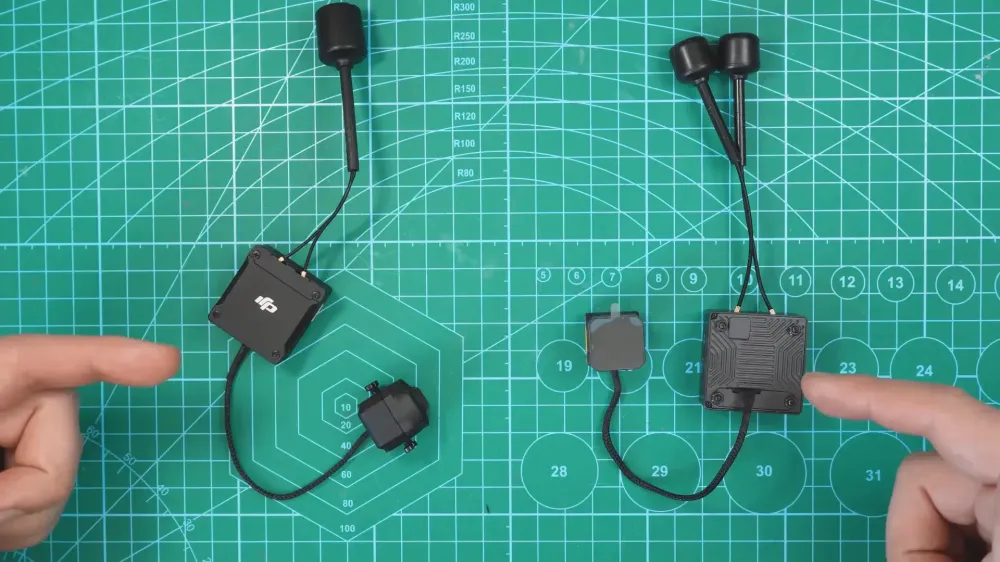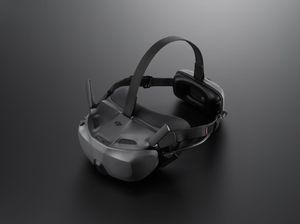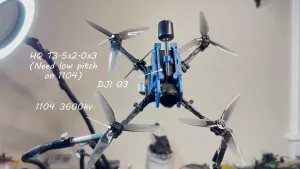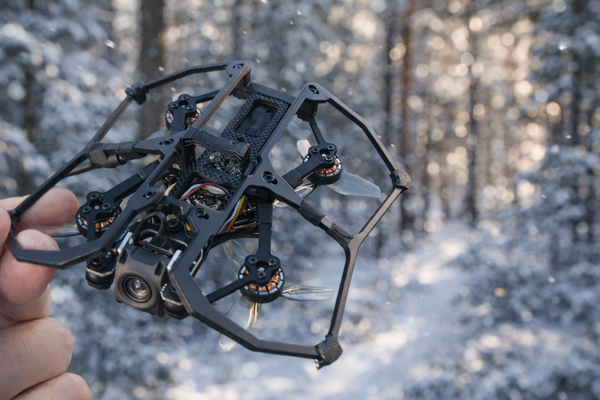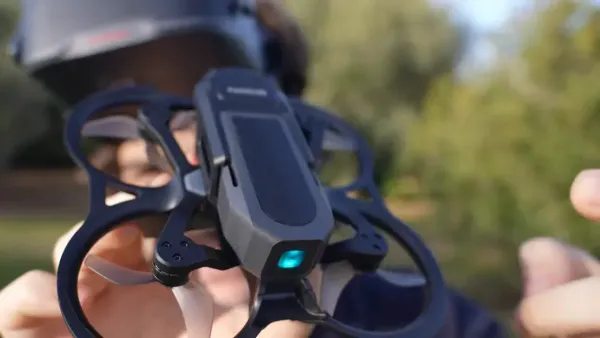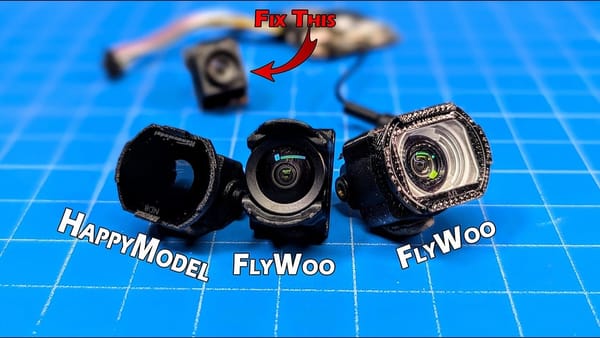In the world of FPV cameras, the Walksnail Moonlight 4K kit has emerged as a strong competitor to the DJI O3. This blog delves into its specifications, performance, and features, providing a thorough comparison to help you decide if it's the right choice for your needs.
Introduction to Walksnail Moonlight 4K
The Walksnail Moonlight 4K is designed for FPV enthusiasts seeking high-quality video performance. With its advanced features and specifications, it promises to elevate your aerial filming experience. The camera's ability to capture stunning visuals is complemented by its lightweight design, making it a compelling choice for both amateur and professional drone pilots.
Unboxing the Walksnail Moonlight Kit
Upon opening the Walksnail Moonlight kit, users will find everything necessary for immediate setup. The kit includes the camera connected to the VTX unit, ensuring a quick installation process. Additionally, it comes with two antennas, a bag of mounting screws, cables, and a user manual for guidance.

Weight and Dimensions Comparison
When it comes to weight, the Walksnail Moonlight kit weighs in at 47 grams, which is slightly heavier than the DJI O3 unit at 39 grams. This difference may seem minor, but it can impact flight performance and battery life. Notably, the weight of the included ND filter is 4 grams, which can be removed if desired, bringing the total weight down to approximately 43 grams.

Field of View and Aperture Specifications
The Moonlight boasts a field of view of 160 degrees, surpassing the O3's 155 degrees. This wider lens can capture more of the environment, enhancing the visual storytelling aspect of your footage. Furthermore, the Moonlight features an f/2.1 aperture compared to the O3's f/2.8, which may improve low-light performance and overall image quality.

Stabilization Features: Built-in vs Gyroflow
Both the Walksnail Moonlight and DJI O3 come equipped with built-in stabilization. However, the Moonlight's unique rubberized grommets aim to dampen vibrations more effectively. This feature could potentially reduce the need for additional vibration dampening measures typically required with the O3. Additionally, both cameras support Gyroflow for post-stabilization, allowing for smooth footage even in challenging conditions.

Camera and VTX Unit Design
The design of the Walksnail Moonlight camera and VTX unit is both functional and user-friendly. The camera connects via a coaxial cable, which is the same length as that used in the O3. This design choice facilitates easy installation and replacement if necessary. The VTX unit includes multiple mounting points, accommodating various drone frames, making it versatile for different setups.

Camera Settings and Options
When using the Walksnail Moonlight 4K, understanding its camera settings is essential for capturing the best possible footage. The camera offers various modes, including day, night, and race settings, making it versatile for different environments.
Among the key settings, users can adjust the exposure value (EV) and saturation from 1 to 10, with a default recommendation of 5 for both to maintain balanced visuals.
The camera supports an aspect ratio of 16:9 and 4:3, although it’s advised to stick with 16:9 for most applications as the 4:3 mode does not provide a taller image for better stabilization.

Resolution and Frame Rate Options
Resolution settings on the Moonlight include 4K at 30 FPS, 2.7K at 60 and 30 FPS, and 1080p at 60 FPS. It’s crucial to note that enabling high frame rates limits the resolution, meaning users must choose their priorities based on the type of footage they wish to capture. For instance, if you aim for smooth 60 FPS action, you’ll have to forgo the 4K resolution.
Additionally, the maximum ISO ranges from 100 to 51,200, allowing for significant flexibility in low-light conditions. However, using higher ISO settings can introduce noise, so it’s essential to find a balance that works for your shooting environment.

Flight Footage Comparison: O3 vs Moonlight
In evaluating the performance of the Walksnail Moonlight against the DJI O3, it’s important to consider various factors, including clarity, stabilization, and overall image quality.
Both cameras were tested under similar conditions, capturing footage at 4K 60 FPS. The comparison revealed that while the Moonlight offers sharper detail in certain aspects, it struggles with overexposure, particularly in bright skies.

Stabilization Performance
Both cameras feature built-in stabilization, but the Moonlight’s unique rubberized grommets provide additional vibration dampening. This could lead to smoother footage, especially in dynamic flight scenarios. However, the O3’s footage appears more consistent in lighting adjustments, showcasing the importance of stabilization in varying light conditions.

Aspect Ratio and Image Quality Analysis
The aspect ratio settings can greatly influence the final output of your footage. While the Moonlight offers a 4:3 option, it does not translate into a taller 4K image, which is a limitation for those seeking enhanced stabilization through a wider field of view.
Users are encouraged to stick with the 16:9 aspect ratio for optimal image quality. The DJI O3, in contrast, provides a more consistent image quality across different aspect ratios, making it a preferred choice for many FPV pilots.

Image Quality Insights
In terms of image quality, the Moonlight often captures more detail in certain scenes but can overexpose bright areas, losing detail in highlights. The O3 maintains more detail in bright conditions, allowing for post-processing adjustments to recover highlights.
Overall, while the Moonlight shows great potential, it still requires fine-tuning in future firmware updates to enhance its image processing capabilities.

Low Light Performance Testing
The Walksnail Moonlight is designed to excel in low-light conditions, a feature that is particularly appealing to FPV pilots. During testing, the Moonlight outperformed the O3 in low light, capturing clearer images even when ambient light is minimal.
However, the 4K images produced by the Moonlight can appear grainy, which may limit usability for professional applications. This graininess is less pronounced in the O3, which, despite its overall lower performance in low light, provides a cleaner image.

Recommendations for Low Light Use
For optimal performance in low light, it’s advisable to keep the ISO settings on the lower end while utilizing available light sources to maintain image clarity. The Moonlight’s low light capabilities are promising, but users should be prepared for potential graininess in the final footage.

Final Thoughts and Recommendations
The Walksnail Moonlight 4K presents a compelling alternative to the DJI O3, especially for those seeking a lightweight, feature-rich camera. While it boasts impressive specifications and unique features, such as built-in vibration dampening, it also has areas that require improvement.
Firmware updates could address issues like the lack of a flat color profile and enhance auto white balance performance. For users of Walksnail goggles or VRX modules, this camera is a strong contender that promises to grow with future updates.

FAQs about Walksnail Moonlight 4K
What is the main advantage of the Walksnail Moonlight 4K over the DJI O3?
The primary advantage is its built-in vibration dampening, which can improve stabilization in flight. Additionally, it has a wider field of view, allowing for more immersive footage.
Can the Walksnail Moonlight record in 4K at higher frame rates?
No, when recording in 4K, the camera is limited to 30 FPS. Higher frame rates can only be achieved at lower resolutions, such as 2.7K or 1080p.
Is the Walksnail Moonlight suitable for low-light conditions?
Yes, it performs better than the DJI O3 in low-light scenarios, but the resulting footage may be grainy. It's recommended to use lower ISO settings for clearer images.
What should I consider when choosing between the Walksnail Moonlight and DJI O3?
Consider your specific needs regarding weight, image quality, and stabilization. If you prioritize low-light performance and built-in dampening, the Moonlight may be the better choice. However, for consistent image quality and post-processing flexibility, the O3 might be preferable.


